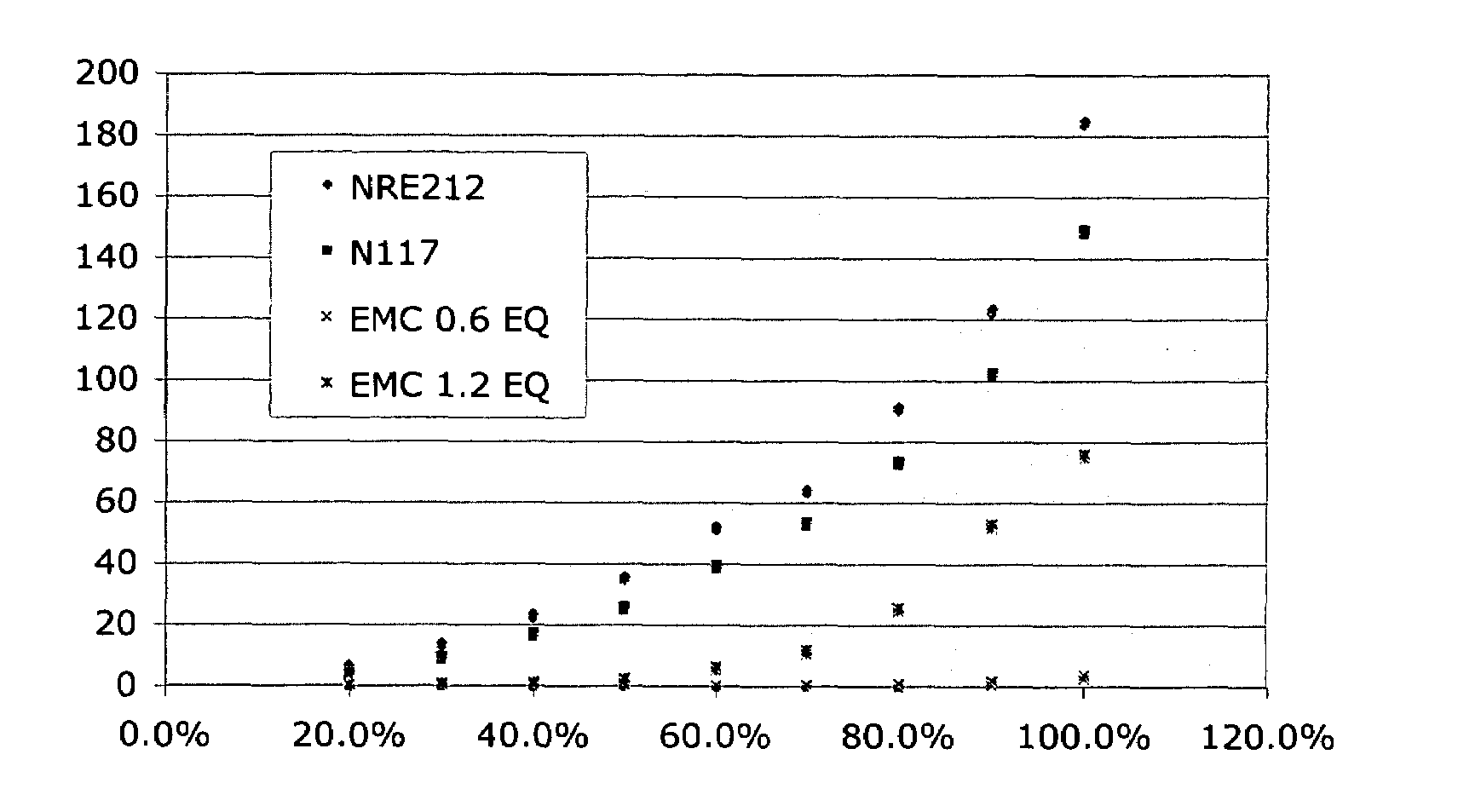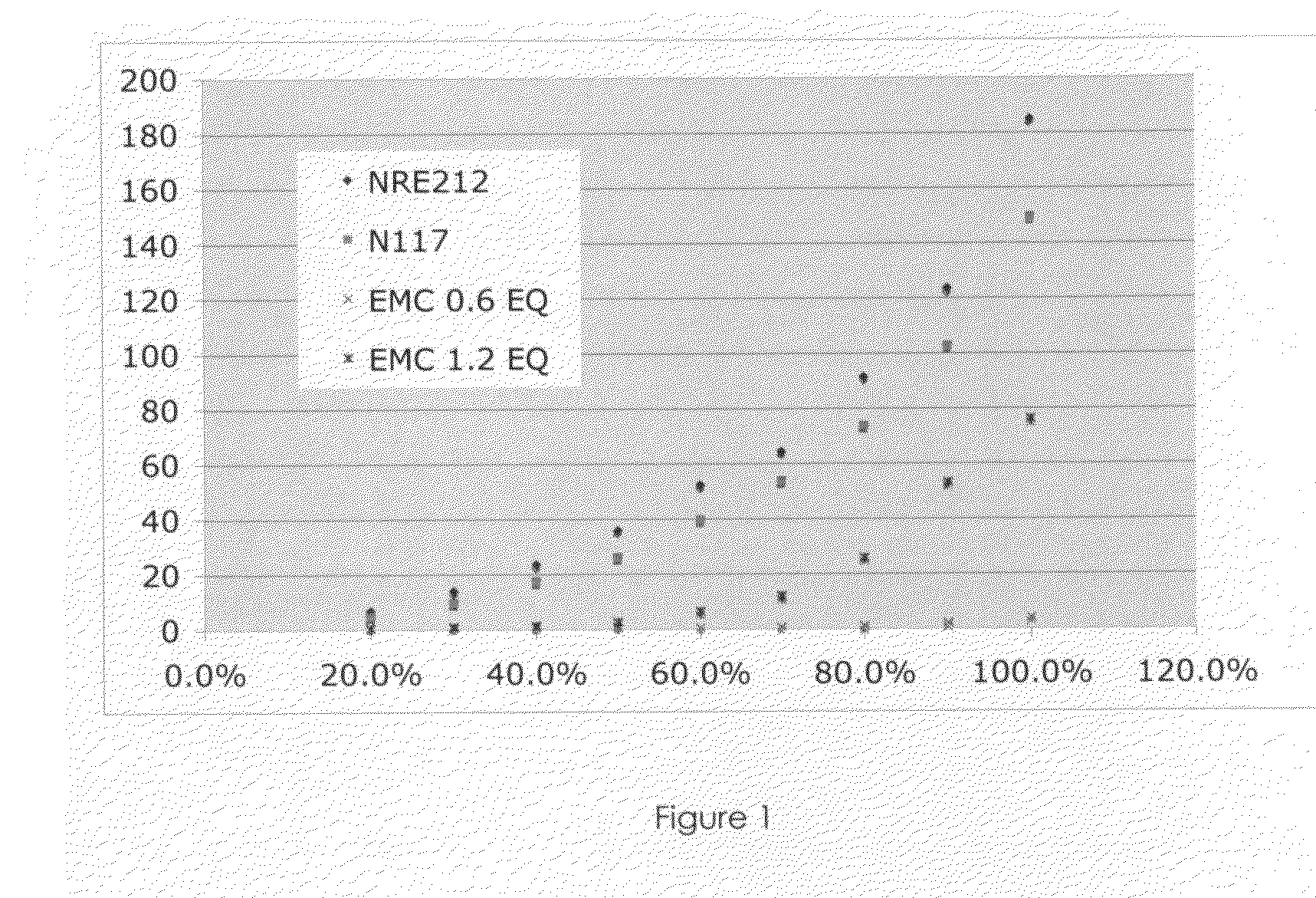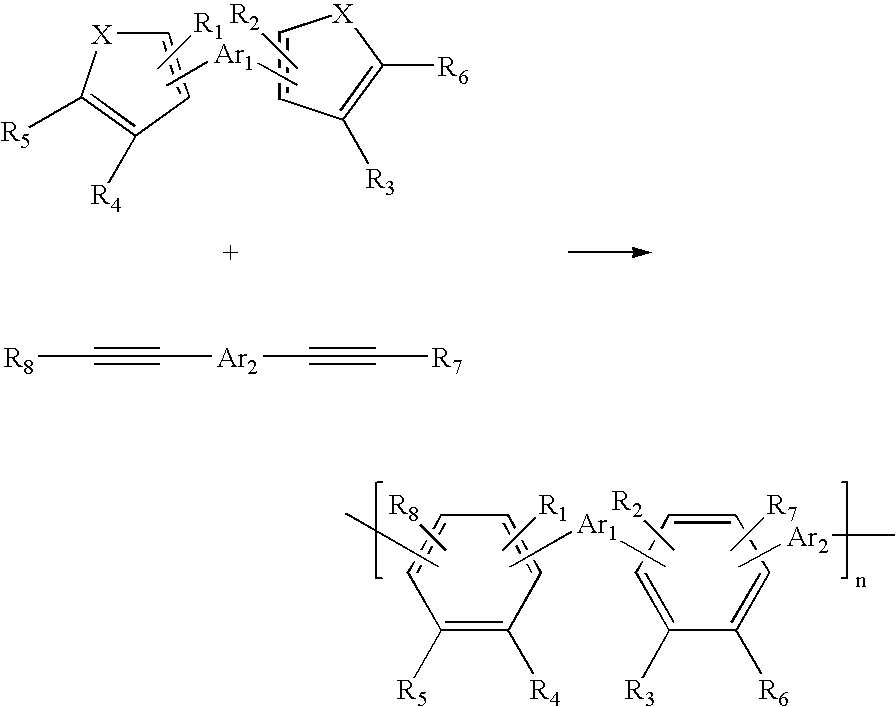Polyarylene polymers and ion conducting functionalized polyarylene polymers resulting from pairing bis-diene arylenes and bis-dienophile arylenes via a diels-alder reaction
- Summary
- Abstract
- Description
- Claims
- Application Information
AI Technical Summary
Benefits of technology
Problems solved by technology
Method used
Image
Examples
example i
[0058]Electrochemical Impedance Spectroscopy (EIS) was used to collect proton conductivity data for polyarylene polymer materials and sulfonated polyarylene polymer material. Films are measured by four probe EIS using a Solartron 1260 frequency analyzer and a Solartron 1287 potentiostat and a test cell designed to measure the materials impedance by the point method. The resistance of each film was measured while totally submerged in deionized-water during each measurement at 25° C. Proton conductivity was calculated using Eq. 1
ρ=d / (A·R) Equation 1
where d is the electrode distance (0.5 cm), A is the cross sectional area of the film, and R is the film resistance. The conductivities are determined in hydrated films by AC impedance spectroscopy over a frequency range of 1×103 Hz to 1×106 Hz.
[0059]The sulfonated polyarylene of the present invention are also useful as battery separators, electrolytes for electrosynthesis cells, electrolytes for electrolysis cells, electrolytes for gas g...
PUM
| Property | Measurement | Unit |
|---|---|---|
| Temperature | aaaaa | aaaaa |
| Electrical conductivity | aaaaa | aaaaa |
| Electrical conductivity | aaaaa | aaaaa |
Abstract
Description
Claims
Application Information
 Login to View More
Login to View More - R&D
- Intellectual Property
- Life Sciences
- Materials
- Tech Scout
- Unparalleled Data Quality
- Higher Quality Content
- 60% Fewer Hallucinations
Browse by: Latest US Patents, China's latest patents, Technical Efficacy Thesaurus, Application Domain, Technology Topic, Popular Technical Reports.
© 2025 PatSnap. All rights reserved.Legal|Privacy policy|Modern Slavery Act Transparency Statement|Sitemap|About US| Contact US: help@patsnap.com



